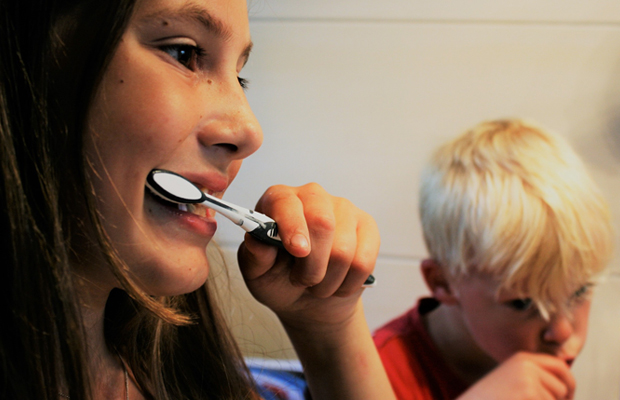Jan 8, 2020
Author
A guide to brushing your teeth the right way
We all probably understand that brushing our teeth is vital to good dental health, especially with a typical westernized diet. Other habits matter a lot, too, like using a dental floss and eating a remineralizing diet. But brushing your teeth is one of the best tools in your arsenal for preventing and reversing tooth decay and gum diseases. Brushing disrupts your biofilm and disorganizes bacteria on top of your teeth. With no brushing, that bacteria work to decalcify (demineralize) areas of teeth, leading to cavities.
Proper technique makes all the difference in maintaining your oral hygiene. Here are a few basics to be kept in mind for brushing your teeth:
- A soft-bristled brush is the best for removing plaque and debris from your teeth. Small-headed brushes are also preferable, since they can better reach all areas of the mouth, including hard-to-reach back teeth
- Brush in the morning, before you go to bed, and after eating sugary, acidic, or processed foods. Just wait 30-45 minutes after your meal.
- Brush for at least two minutes every time.
- Practice a gentle, circular motion when you brush, not a back-and-forth sawing motion.
- Don’t brush too hard.
- You should replace your toothbrush when it begins to show wear, or every three months, whichever comes first
Follow these steps to brush your teeth the right way:
- Wet your toothbrush with water and apply a pea size amount of toothpaste.
- Point the bristles toward the gum line at a 45-degree angle. Brush using short, circular motions for approximately 20 seconds. Start with the outer surfaces of back teeth.
- After 20 seconds, roll the brush head away from the gum line so the bristles sweep the surface of the tooth, removing plaque and food particles in the process.
- Continue working in a clockwise direction
- Repeat the same for the inside surfaces of the upper and lower molars.
- Brush the lingual, or back surface of the upper front teeth by using the tip of the toothbrush head. Direct the bristles toward the gum line and use a flicking motion down the surface of the tooth. Repeat this two or three times for a more thorough clean.
- For the back surfaces of lower teeth, point the bristles of the tip of the toothbrush toward the gum line and flick the bristles up and away from the gum line in a sweeping motion. Repeat this step two or three more times.
- Brush the top, biting surfaces of the upper and lower premolars and molars using a circular motion.
- Teeth aren't the only things in your mouth that need to be cleaned. Your tongue, the roof of your mouth and the insides of your cheeks can also hold onto food particles, plaque, and bacteria that make your breath smell. Just like your teeth, they deserve a good cleaning. With a gentle, circular motion, thoroughly brush your tongue, the insides of your cheeks and the roof of your mouth.
- Finish up with rinsing your mouth thoroughly with water or mouthwash
